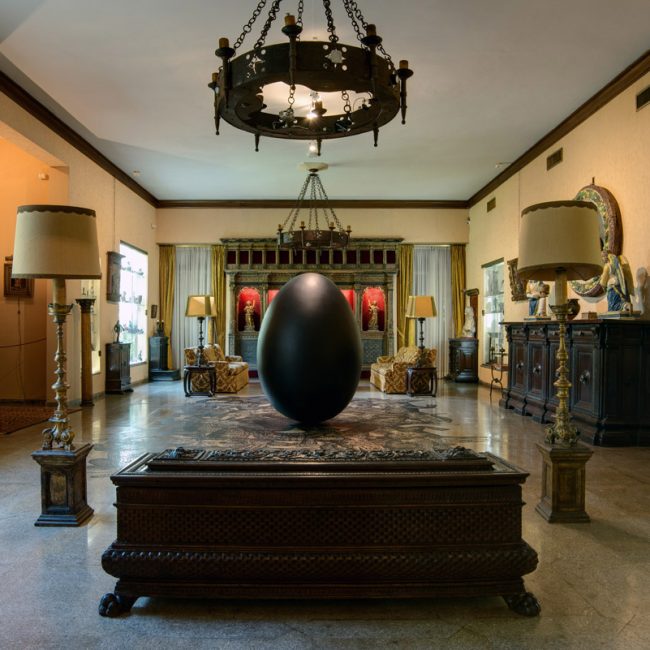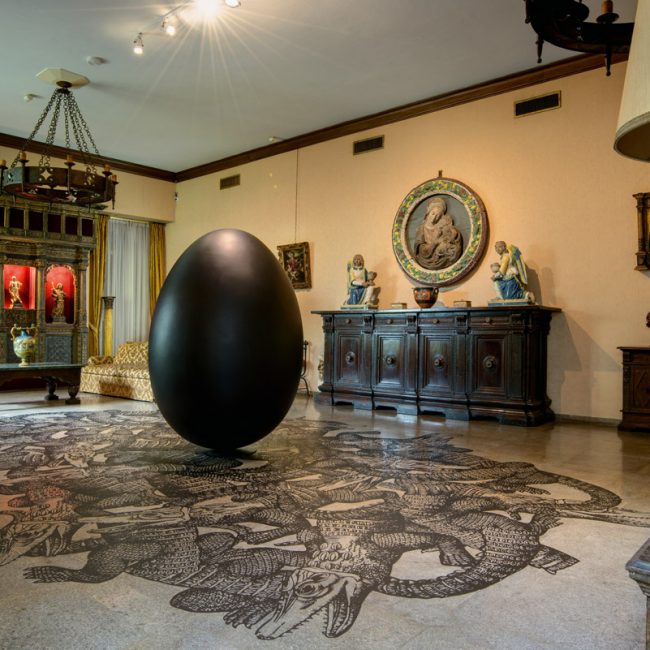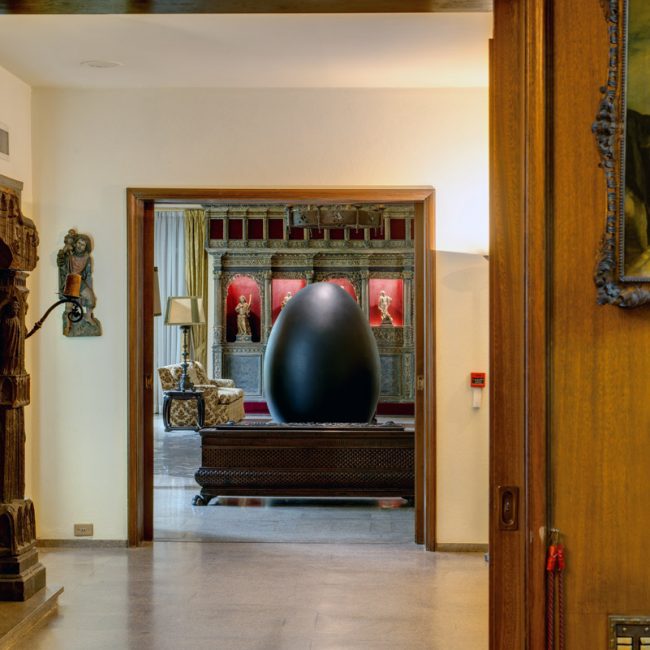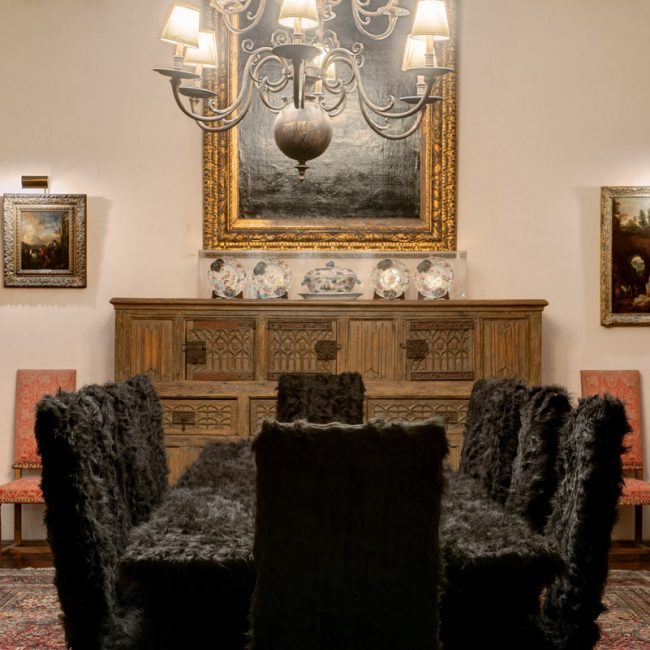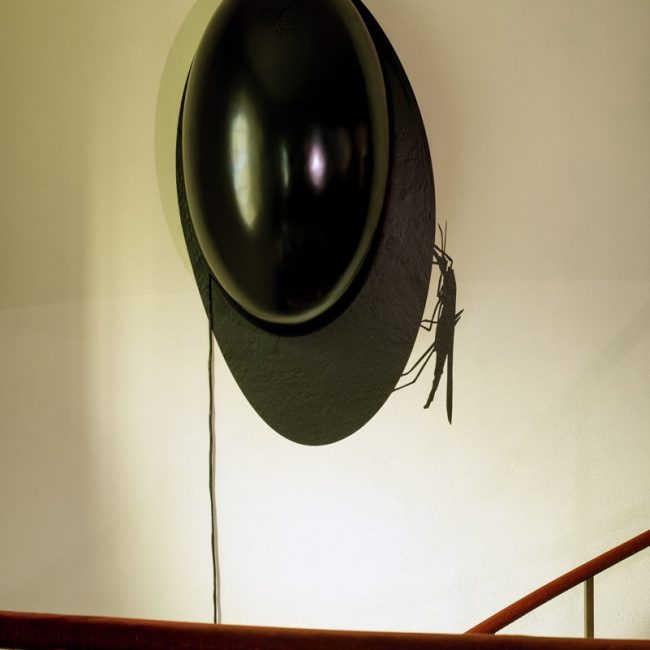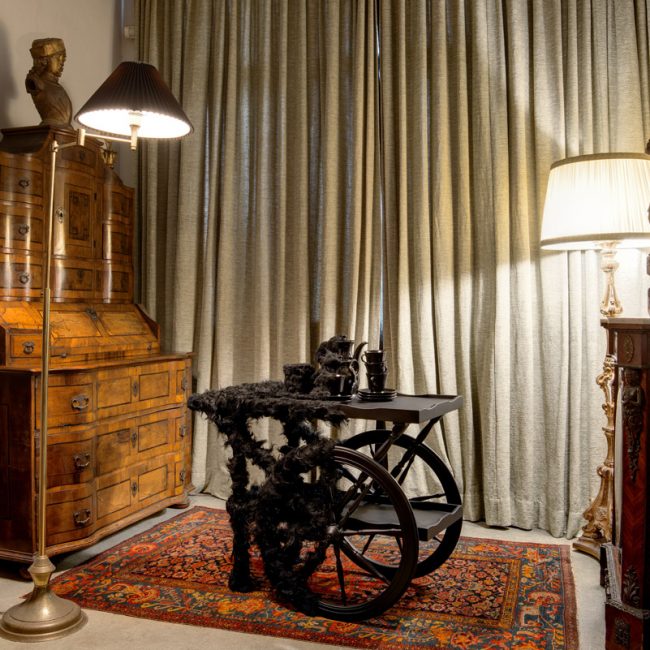Regina
Silveira
INSOLITUS
Breathing Project
21st edition | september 27 2016 – january 29 2017
Rio, August 5 de 2016.
Dear Regina,
Exactly ten years ago, in 2006, I did an annotated interview with you for the “Luz Zul” exhibition we did at Centro Cultural Telemar, now Oi Futuro. In it, I made the following observation about your reply to my question about how you saw the issue of the unexpected [“insólito” in Portuguese] and wonderment I had identified in your work:
The unexpected, wonderment, and perplexity are dimensions that the fragmented time of contemporaneity has eaten up so completely that perhaps we haven’t yet assessed the harmful consequences it will represent in the future. These elements are the font of poetry, philosophy, and the creative imagination of science. It’s a dimension that it’s hard to live without.
Ten years on, I am surprised by the title you have given to your intervention for the 21st edition of the Breathing project: Insolitus. You have made me realize that that 2006 exhibition is in some way connected to this intervention, that it has been permeating under the surface for years and has been manifested in our conversations and has in some way led to your primary insight / decision to turn the table and chairs in the dining room into a black furry object – an unexpected object – in Mutant l. This idea gradually took shape and helped me to realize more clearly the black side of your body of work. I am thinking here of the works with shadows as poetically and metaphorically offsetting the works that deal with light, identifying the void that all bodies project outside themselves.
In the text for the catalogue in 2006, I referred to a Jewish parable that speaks of the two fires that wrote the tables of the law: black fire, which drew the letters that we read, and white fire, which created the space between the letters, necessary for us to read them. And I went on to say that today we read the black fire, but that one day we would manage to read the white fire and our perception of reality would change completely. Similarly, I think that shadow in your body of work could be seen as an intangible presence that is projected beyond the material body, and also a presence that projects the subterranean void of this very body.
For me, Insolitus can be interpreted in two different ways: as a paradox that challenges us, like the fires and shadow, an expression of the subterranean void in society today, directionless, which brings forth the negative drives of an uncertain, insecure world; and as a spark of hope, a calling, which says to us: be surprised by the unexpected! The sense of uncanny and perplexity it triggers are a cry for hope. Beware and be mindful of the insidious forces that our choices are leading us to; we will have to find ways out because the feeling of unease and disquiet today is intense.
Far be it for me to give your intervention a political or pamphleteering overtone – I know it is not and has never been your intention; in fact, I see a spiritual dimension in it. A generous dimension. Mundus admirabilis is an infestation of giant insects that take over the façade of the Eva Klabin house museum like Dark Swamp (nest), in the Renaissance Room, where a black egg 180cm in height sprouts from a crocodile swamp, conjuring up a sense of unexpected wonderment that baffles us and makes us ponder what might emerge from it. All of this with the sound of helicopters and mosquitoes in the background, issuing from Fable ll, at the top of the stairs in the main hall, like a disconcerting reference to the world of insects and Francis Ford Coppola’s film Apocalypse Now, and its last words, “the horror, the horror, the horror.” In this way, you create a soundscape that permeates the whole house, lending your intervention poetic coherence.
Conserving our capacity to reflect at this time of uncertainty in the world, lost as we are between a familiar territory, but one which we know to be without future, and a desire for something new, yet apprehensive about the unknown; letting ourselves interrupt the flow of daily life and through your intervention reflect upon our wayward paths: this, for me, is what hope is.
Hope in the sense that we are at a crossroads between two worlds, between two writings, between two fires, and we must make our choices fearlessly: cling onto what we know and repeat the same mistakes of the past, or cling onto hope, even though we do not rightly know where it will lead us, and take a chance on the certainty that we no longer want what we have and that the unknown will open up new paths. We long for some spiritual change. Insolitus brings us the rawness of a substantive reality, which your work has the power to do, by laying bare, by materializing on the surface of the world, the anguish of our society today.
Only art and philosophy are capable of such a feat because they have the spiritual means to do so; they do not fear the unknown, nor are they afraid of pointing out issues that bother us. I hope that the people who experience this new intervention in the Eva Klabin house museum collection realize that what this curatorial project has proposed from the outset, which you, Regina, have managed to express so aptly by taking the idea of intervention contained in the original Breathing project proposition to the extreme, is the need to destabilize in order to find a new balance. Your destabilization of the codes of a residence, upsetting its domestic peace and quiet with your imaginary, creates a striking metaphor for contemporary times.
Dearest Regina, only artists are capable of seeing into the future, not that this has any merit of itself, since the future will come one way or another. But as bearers of this potential, they conserve the only certainty possible, which is clarity of perception. What do I mean by this? It is that the artist’s body is a kind of vehicle for times in metamorphosis expressed through artworks. The work is more important than the artist; it is an x-ray of its time; it is capable of creating a perception of evidence, a block of sensations (Deleuze), through the senses of identification/empathy (Worringer), making the mystery of each epoch transparent.
Mutant II, which you have created especially for the Breathing project, lays bare the process of art as a metamorphosis of time, which is what I am talking about. Through this work we are surprised with crystal clarity at how the metamorphosis of form comes about: a commonplace tea trolley is presented in mid-transformation into a furry tea trolley, revealing the process in an almost cartoon-like way.
The artwork bears testament to its own time and provides the transparency we need to understand the diagram that constitutes its contemporary nature. I am convinced this is what you have managed to do. That is why, Regina, I so admire your intervention, Insolitus, and your substantive language, and I am grateful for the happy encounter we have had, putting new works alongside existing ones, reinforcing the greater meaning of your work and the original purpose of the Breathing project, which is to prompt reflections about what is established, frozen by time – precisely the state the house museum imposes on the objects and collection it harbors.
With my warmest regards,
Marcio



